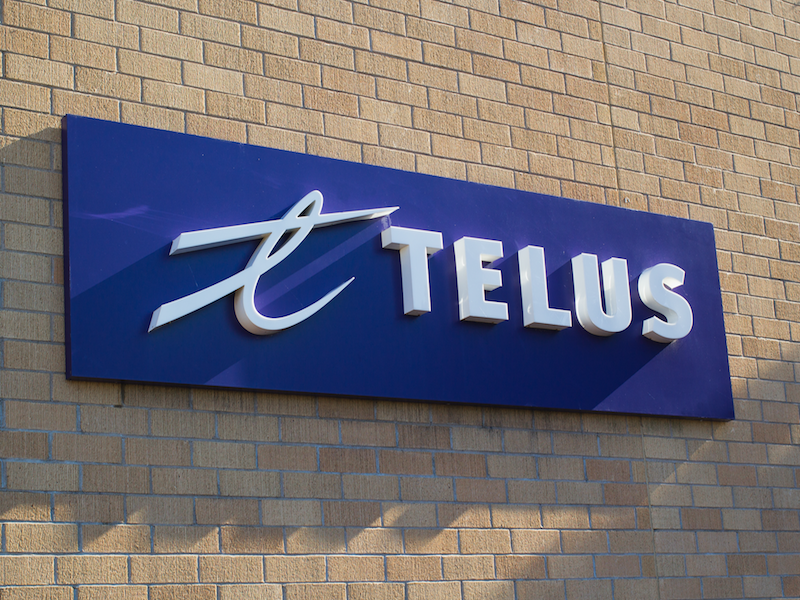
Since Telus Communication Inc.’s journey from defined benefit pension plans to defined contribution began in 1996, it’s come a long way, but it’s far from over.
During a session at the Association of Canadian Pension Management’s annual conference on Wednesday, Carol Craig, Telus’s director of benefits and pensions, and Dave Lawson, vice-president of investment management, noted the DC option was introduced in 1996. Its contribution structure mirrored the DB plan’s design, added Craig, with the company match increasing with service.
Read: Coca-Cola wins big for successfully communicating complex pension transition
“Team members could choose to go over to the defined contribution pension plan,” she said. “New team members to Telus also had the option. They could choose either defined contribution or defined benefit. If they didn’t make a choice, they were defaulted into the defined benefit pension plan because they always had a choice afterwards to move to DC if they wanted to. We didn’t want to default them into an option that they couldn’t have any more choices left.”
In 2007, the company closed its DB plans to management employees. Before the plan closure, Telus put together a team of employees from across Canada to look at the current DC plan it offered. “With input from team members across Canada, we changed our plan design and we took out that ‘you get the most money after you have more service,’” said Craig. “People could start to accumulate the money in the early stages, which we thought was extremely important, especially if we were actually going to think about retirement income adequacy at all.”
In 2011, the company closed its DB plans to unionized members through the collective bargaining process. However, four legacy DB plans, with about 4,000 employees still accruing service, were left open, noted Craig.
Telus also has two DC plans, one regulated provincially and one federally. The bulk of staff are in those plans. The main challenges with the DC plan, according to Craig, are communications, engagement, assessing retirement outcomes and attraction and retention.
Read: Pension communication errors can lead to surprise costs for plan sponsors
Telus also recently took its retirement plans to market, noted Craig. “We did this because we hadn’t been to market for over 20 years.”
Through the process, it changed its record keeper and looked closely at the investments on offer. This led to a total revamp of the investments, with a move from 18 options to six. During the change, Telus hosted pension sessions for employees across Canada. Across four weeks, 6,800 plan members attended these sessions, making 5,200 active investment decisions, said Craig, noting more than 1,000 employees increased their contribution levels.
“Through all of the pension weeks that we’ve done over the years, the most we’ve ever had on contribution level changes was 300, so we were thrilled.”
While Craig was building up and refining the DC plan, Lawson worked towards retiring the company’s DB plans. “We have a number of legacy defined benefit plans through our history of mergers and acquisitions and evolution, but we have four larger ones that make up the majority of our assets,” he said. “They’re all federally regulated plans and they’re all fairly well funded — at least on average.”
Read: Could solvency reform in Canada lead to a DB pension revival?
He noted the four plans are quite different, in terms of their closure date, plan design, funded statuses and levels of maturity. “We have to try to find a way to get scale with the assets of those plans, but also recognize that we need to have a unique solution for them as well — recognizing the characteristics of each.”
Some 4,000 plan members are still accruing service in Telus’ DB plans, so they’re mature with roughly 80 per cent retirees or deferred members, said Lawson. “The contributions in are negligible. It’s real money if we’re talking $50, $60 million, but relative to [a] roughly $10 billion asset base, the contributions don’t make much of an impact.
“And the benefit outflows are meaningful. So about 4.5 per cent of the assets is cash out the door. It’s about $35 million a month that the plan has to support and kick out to pay what we’re here for, which is to pay pensions that people are counting on.”
This means the DB plans can’t take drawdown risk the way they used to because they don’t want to be in a position where they’re forced to sell assets in a bad market, noted Lawson. As well, the plans changed how they manage assets to remove risk. “We’ve taken out the drawdown risk by reducing the asset risk. We haven’t yet fully matched off and taken out the interest rate risk, but that’s coming.”
Read: How Husky Energy included active members in its DB plan annuitization
Lawson said he also spends a lot of time thinking about liquidity risk because of the plans’ large outflows and their legacy portfolio of private assets. “We have to be very on top of both short-term and long-term liquidity.”
One of the company’s plans has guaranteed indexing to the consumer price index. “We’ve hedged that off on the asset portfolio with a large inflation-linked bond portfolio, but that’s a place we’ll look sooner than the other places in terms of an actual risk transfer, because we think the longevity risk we carry is a lot higher when we have guaranteed benefit enhancements — guaranteed CPI — because one, people can live longer, and if we get an inflation environment and then the cost of those pensions is also higher,” said Lawson.
Ultimately, Telus is aiming to pay its pension promise and exit the pension business, he added, noting it will de-risk and wind up all the DB plans. “But we think we’re somewhere in the 10-15 year time horizon to actually get to the finish line.”
Read: Pension legislation should balance DB sustainability with pension promise: CIA
